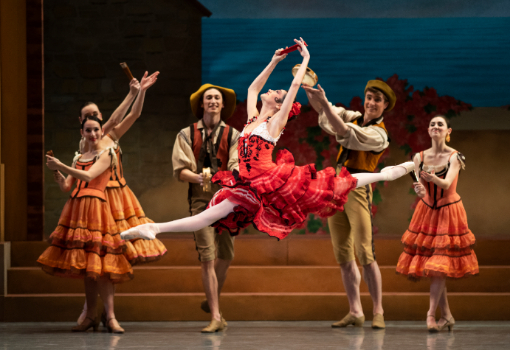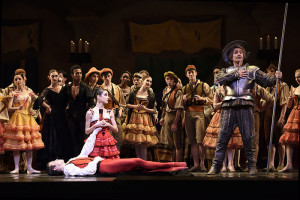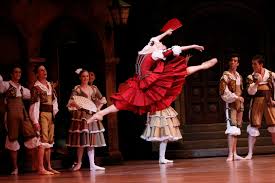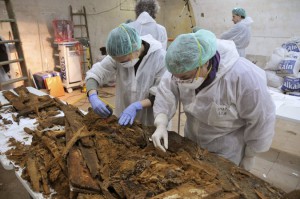This article is about the ballet, Don Quixote, in general. Curious to read my review of the San Francisco Ballet’s February 26, 2022 performance at the War Memorial Opera House? Click HERE.

Do you know your Don Quixote ballet trivia? So maybe you’ve seen the entire ballet, or plan to. Here are ten bits to entertain and educate:
- The staging you were/will be watching, whether it is American Ballet Theatre, Royal Ballet, San Francisco Ballet, Mariinsky, Bolshoi or other, likely has stemmed from the same source: Alexander Gorsky’s 1900 restaging of the even more original source, Marius Petipa’s 1869 four-act, eight-scene ballet for Moscow. Which blossomed two years later into an even bigger restaging for the St. Petersburg stage and the Imperial Ballet: five acts and eleven scenes. Which surely made for a long night of dancing and set changes. Which is probably why Gorsky restaged it in 1900 (for the Moscow stage and, two years later, for the St. Petersburg Imperial Ballet stage). This last one, then, is the staging that has endured.
- The ballet, in some form, has been around for over 250 years. First in 1740, in a muted, era-appropriate style, by Franz Hilverding, in Vienna. In 1768, Jean Georges Noverre offered his version; 1808, Charles Didelot did the same. On and on, through the 19th century: one for the London court, one for Berlin, one for Turin. The best known Petipa/Gorsky staging sort of of knocked the others out of importance, which is unfair, but so is life.
- The ballet isn’t supposed to reflect the entire Cervantes tome, but instead is based on one extended episode from the novel. Yes, in the ballet, there is still a windmill and Don Quixote does fight with it, but only a brief exchange, swiping at it ineffectually with his jousting pole before he falls to the ground and drifts off to dreamland (followed by an utterly delicious dream ballet scene). Some stagings try to coax more out of his character and his presence in the libretto, but most just focus on dance, dance, dance, and Kitri and Basilio’s romance. Which, hey, works.

San Francisco Ballet, Don Quixote, photography Erik Tomasson - More frequently performed than the full-length ballet is the famous Grand Pas de Deux from the final scene. It’s one of those bravura numbers soloists love to tour, with good reason. It’s lovely, technically demanding, memorable. Kitri’s solo variation is also commonly performed on the competition circuit. You might remember this pas de deux from the 1977 film, The Turning Point, where Leslie Brown and Mikhail Baryshnikov tear up the stage as Kitri and Basilio. I loved it so much.Here’s that pas de deux featuring American Ballet Theatre principal dancers Paloma Hererra and Angel Corella. They are stupendous.
- Cuban-trained dancers know this ballet very, very well. For the men, Basilio is a role they have performed and enjoyed through many years of training. I have to say, they seem to have an astonishing knack for the part. When, in 2015, I saw San Francisco Ballet principal Carlos Quenedit tearing up the stage on the company’s recent opening night of Don Quixote, I was stunned by how well he did. He very much had the “wow” factor going that night, in this, his first season as a company principal. Mathilde Froustey, too, as Kitri, was knockout wonderful. (You can read my review of that performance HERE.
- The Ludwig Minkus score is not as thrilling as La Bayadére, which he also composed, but it certainly does the job of propelling the dancers and production ever onward at a brisk clip. This is not a short ballet. Nor is it the breathtakingly soulful Kingdom of the Shades. It moves, moves, moves.
- For the female dancers, the fan flourish movements are a dance in themselves, a difficult one to master. And hanging on tight to those fans through all the dancing is tougher than you’d imagine.

- Famous stagings of this ballet, since the Petipa/Gorsky staging, include Ninette de Valois for Royal Ballet (1950); Rudolph Nureyev for Vienna State Opera Ballet (1966); Mikhail Baryshnikov for American Ballet Theatre (1980). Recent restagings include The Royal Ballet’s version by Carlos Acosta (2013) and San Francisco Ballet’s, by Helgi Tomasson and Yuri Possokhov. (2003, with gorgeous new costumes and set in 2012).
- Balanchine created his own Don Quixote during his Suzanne Farrell obsession years. And, you guessed it, he was Don Q and Farrell his idealized love, Dulcinea (whom Don Quixote mistakes Kitri for, in most of the versions). But he used none of the original staging, nor the libretto, ignoring the Minkus score as well. Seems to me the production was a little um, self-serving. Perhaps the public felt the same, as the ballet was pulled from NYCB repertoire ten years later.
- The best bit of trivia: Spanish authorities revealed that they have found what appears to be the remains of Don Quixote’s creator, Miguel Cervantes, 400 years after his death. (http://www.nytimes.com/2015/03/18/world/europe/cervantes-remains-madrid-spain.html?_r=0) (How quixotic that search must have been. And thank you, Cervantes, for giving us that lovely adjective!)
